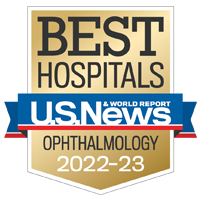
Stargardt Disease
Stargardt disease is the most common form of inherited juvenile macular degeneration. It is caused by a deterioration of the eye’s macula. The condition typically develops during childhood or adolescence, but sometimes does not cause vision problems until later in life. The macula is part of the retina that is responsible for color perception and central vision, which is needed for detailed tasks such as reading, writing, driving and seeing other fine details clearly.
The rate at which vision is lost varies for each person. However, eventually most people with Stargardt disease have 20/200 to 20/400 vision, which cannot be corrected with prescription eye glasses, contact lenses or refractive surgery.
In most cases, Stargardt disease is inherited as an autosomal recessive disorder. People who have one gene for the disease paired with one normal gene are unaffected. These people are called carriers. When two carriers have children, each child has a 25 percent chance of inheriting two copies of the Stargardt gene (one from each parent). Children who inherit two copies of the Stargardt gene will have the disease.
Our Approach to Stargardt Disease
UCSF's ophthalmologists provide comprehensive evaluations and care for all types of eye conditions, from the most common to the rare and complex. They are experts in inherited eye diseases, such as Stargardt disease.
Although Stargardt disease currently has no treatments, researchers are working to develop them. Interested patients may be able to receive experimental treatments by joining a clinical trial. Lifestyle changes, such as avoiding excessive light and not taking supplements that contain vitamin A, can slow vision loss. Low-vision aids, mobility training and other supportive care can also help patients with performing everyday tasks.
Awards & recognition
-

Among the top hospitals in the nation
-

Best in Northern California for ophthalmology
UCSF Health medical specialists have reviewed this information. It is for educational purposes only and is not intended to replace the advice of your doctor or other health care provider. We encourage you to discuss any questions or concerns you may have with your provider.





